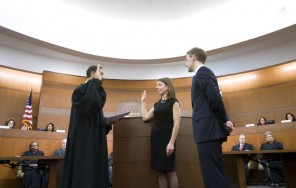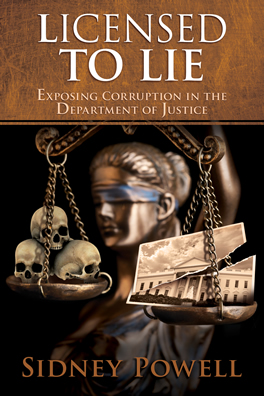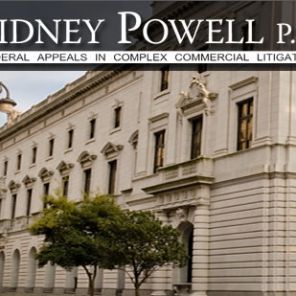DC COURT OF APPEALS ORDERS NEW TRIAL FOR SINISTER BRADY/GIGLIO VIOLATIONS
 In an exhaustive indictment of government discovery and Brady/Giglio gamesmanship, the District of Columbia Court of Appeals, Judge Catherine Friend Easterly [great judicial name], recently ordered a new trial for DC Inmate Carl Morton in United States v. Vaughn et al. Morton and co-defendant Alonzo Vaughn were convicted for (1) aggravated assault and (2) assault on a law enforcement officer in connection with an incident at the D.C. Jail in which a group of men attacked a fellow inmate and a corrections officer who came to that inmate’s aid. Unbeknownst to either defendant, the government’s, Assistant United States Attorneys Mary Chris Dobbie and Reagan Taylor, primary and strongest identifying witness, presented to the jury as “Officer” Angelo Childs, had recently been adjudged to have made demonstrably false allegations regarding an earlier inmate assault. “Officer” Childs was subsequently demoted from Lieutenant to Sergeant as a result of that false testimony.
In an exhaustive indictment of government discovery and Brady/Giglio gamesmanship, the District of Columbia Court of Appeals, Judge Catherine Friend Easterly [great judicial name], recently ordered a new trial for DC Inmate Carl Morton in United States v. Vaughn et al. Morton and co-defendant Alonzo Vaughn were convicted for (1) aggravated assault and (2) assault on a law enforcement officer in connection with an incident at the D.C. Jail in which a group of men attacked a fellow inmate and a corrections officer who came to that inmate’s aid. Unbeknownst to either defendant, the government’s, Assistant United States Attorneys Mary Chris Dobbie and Reagan Taylor, primary and strongest identifying witness, presented to the jury as “Officer” Angelo Childs, had recently been adjudged to have made demonstrably false allegations regarding an earlier inmate assault. “Officer” Childs was subsequently demoted from Lieutenant to Sergeant as a result of that false testimony.
In a Department of Corrections Office of Internal Affairs (OIA) “Final Report,” Childs and other officers were shown to have falsely reported a separate incident regarding alleged inmate assault. In the relevant portion of this report — which the government suppressed — the investigator concluded that Childs’ report was, in fact, contradicted by video footage taken of the scene. Instead of turning the entirety of the report over to defendants, or to the court, the government prosecutors strategically excised the damning portions and submitted only the innocuous and inconclusive portions (sound familiar):
the government submitted to the trial court ex parte what it said was the OIA Final Report, but in fact was only the first five pages of the ten-page report (and included none of the documents in the appendix, 76 pages in all). The first five pages of the OIA Final Report contain “background” information, investigative notes, and a full reproduction of Officer Childs‟s account of an inmate assault in his Incident Report without any indication that that account was being questioned; the findings adverse to Officer Childs begin on the sixth page.
Amazingly, the prosecutors, Mary Chris Dobbie and Reagan Taylor, “did not inform the court that the five-page ex parte submission was not the complete OIA Final Report or that it was missing its appendices.” Later, prosecutors Dobbie and Taylor tried to “spin” this egregious Brady/Giglio violation by arguing first that the OIA Final Report itself was not reliable or credible as to its “findings” on Childs, and so was not relevant to his veracity in this case, and second, on appeal, that the jury would have ignored the Report as immaterial. Of course, the trial court (and/or the defendants) had no way of knowing that the information submitted ex parte was not even the final report, which included the adverse findings against Childs. Indeed, it was only after trial that the trial court discovered – with no help from the government – that what had previously been submitted was fundamentally incomplete. Even then, the trial court refused to order a new trial, essentially buying into the post-hoc justifications, accompanied by a belated and likely false affidavit from a DC investigator, of the US attorneys.
The underlying criminal case against Morton and Vaughn was marginal from the outset. Neither was identified by an eyewitness at the scene. However, blurry and choppy video footage captured pixelated snippets of the scene. Childs volunteered that he was familiar with the vast majority of inmates, had already named 11 inmates who he saw in the footage [he had watched with another officer, Sergeant Jimmy Harper] and then named Morton as an additional participant. Several months later, in the U.S. Attorney’s Office, Childs named Mr. Vaughn as another participant in the attack. Other than Childs’ and Harpers’ identifications there was no other evidence placing Vaughn or Morton at the scene or as participants in the attack.
The government’s entire case was, admittedly, founded on the credibility of its two post-incident identifying witnesses, Childs and Harper. Harper’s corroborative, “inconsistent and weak” testimony was already of limited credibility because he was at the scene of the attack but did not name either Vaughn or Morton in his initial incident report. The government’s case therefore hinged on Childs’s naming of Vaughn and Morton from his review of the dubious video evidence captured of the scene. Because defendants had been denied access to the significant impeachment evidence in the OIA Final Report, “Officer Childs‟s testimony was largely unimpeached.”
Summarizing the panel’s (including Judges Stephen H. Glickman and William C. Pryor) conclusions, Judge Easterly wrote:
The government did not fulfill its due process disclosure obligations in this case. Moreover, its failure to provide the court and the defense with complete and accurate information as to the contents of the OIA Final Report thwarted the trial court‟s ability to “require strict compliance with the demands of Brady . . . in the first instance.” Boyd v. United States, 908 A.2d 39, 62 (D.C. 2006).
Reviewing the government’s conduct and the trial court’s failures thereto, the panel “conclude[d] that the trial court was misled and that its adoptive fact-finding was clearly wrong.”
This opinion doggedly examines a plethora of Brady and Giglio sub-doctrines (timely production; accuracy and completeness in production; knowledge of evidence is transmuted to all those operating on the government’s behalf; etc.) – and is worth reading for this reason alone. As it bears on the prosecutors’ attempts to “spin” or explain away such an egregious Brady/Giglio violation, the opinion importantly cites to well settled (but under-emphasized) authority that “it is not for the prosecutor to decide not to disclose information that is on its face exculpatory based on an assessment of how that evidence might be explained away or discredited at trial, or ultimately rejected by the fact finder.” As the second circuit has said, to allow such a practice would be “to appoint the fox as henhouse guard.” DiSimone v. Phillips, 461 F.3d 181, 195 (2d Cir. 2006).
Finding its Brady/Giglio determination “not difficult” in light of the record, Judge Easterly concluded:
[The suppressed evidence] was powerfully impeaching. It did not simply establish that Officer Childs had a track record for untruthfulness. It established that he was willing to make false reports implicating inmates in assaults on law enforcement agents—the precise context of this case. **** Had the defense and the court known the full details of the OIA‟s actual findings and of the discipline meted out by DOC as a result—and had the government known the defense knew—we think it likely that this case would have played out very differently. **** [ The government’s contrary arguments] blink[] reality.
Finally, while noting that the prosecutors’ “bad faith” was not relevant to its decision to reverse for Brady/Giglio violations, the panel plainly took issue with the hide-and-seek mentality of the prosecutors, and “was left with many questions about the government’s behavior in this case….” Whether the DC Bar or the Department of Justice’s Office of Professional Responsibility ever addresses those “many questions,” Judge Easterly has plainly struck a blow for justice in this opinion.
TEL










